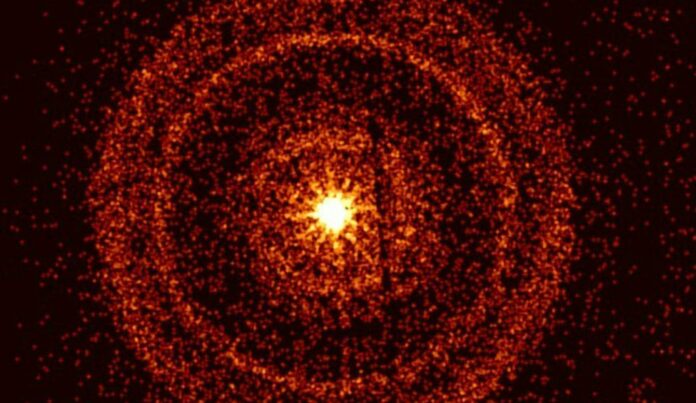An extremely intense and persistent pulse of high-energy radiation that passed over Earth on Sunday, October 9, has excited astronomers all across the world. The gamma-ray burst (GRB), the most potent class of explosions in the cosmos, which is responsible for the emission, is one of the brightest events ever recorded.
NASA’s Fermi Gamma-ray Space Telescope, the Neil Gehrels Swift Observatory, and the Wind spacecraft, among others, detected an influx of X-rays and gamma rays on Sunday AM Eastern time. Telescopes around the world are still studying the aftermath.
The explosion, known as GRB 221009A, gave the 10th Fermi Symposium, a gathering of gamma-ray astronomers currently taking place in Johannesburg, South Africa, an unexpectedly exhilarating start.
“It’s safe to say this meeting really kicked off with a bang – everyone’s talking about this,” adds Judy Racusin, a Fermi deputy project scientist at NASA’s Goddard Space Flight Center in Greenbelt, Maryland, who is attending the conference.
According to estimates, the signal had traveled almost 1.9 billion years from its point of origin in the constellation Sagitta to reach Earth. Observers believe it is the scream of a newborn black hole, created when a giant star collapsed under its own weight and sucked all of the gas and dust in its vicinity into its core. In these conditions, a developing black hole generates strong jets of particles moving close to the speed of light. As the jets fly into space and puncture through the star, they produce X-rays and gamma rays.
The burst also gave two experiments on the International Space Station – NASA’s NICER X-ray telescope and a Japanese detector known as the Monitor of All-sky X-ray Image (MAXI) – their long-awaited first opportunity to observe together. The connection, known as the Orbiting High-energy Monitor Alert Network (OHMAN), was launched in April. It lets NICER respond quickly to outbursts found by MAXI, something that used to need scientists on the ground to do.
“OHMAN provided an automated alert that enabled NICER to follow up within three hours, as soon as the source became visible to the telescope,” says Zaven Arzoumanian, the NICER science lead at Goddard. “Future opportunities could result in response times of a few minutes.
The light from this ancient explosion gives us new information about how stars die, how black holes are born, how matter behaves and interacts near the speed of light, how things are in a faraway galaxy, and much more. It could be decades before another GRB this bright is observed.
A preliminary investigation shows that the burst was observed by Fermi’s Large Area Telescope (LAT) for more than ten hours. One reason why the burst is so bright and lasts so long is that it is close to us for a GRB.
“This burst is much closer than typical GRBs, which is exciting because it allows us to detect many details that otherwise would be too faint to see,” adds Roberta Pillera, a Fermi LAT Collaboration member who led initial communications about the burst and a doctoral student at the Polytechnic University of Bari, Italy. “But it’s also among the most energetic and luminous bursts ever seen regardless of distance, making it doubly exciting.”
Image Credit: Getty
You were reading: NASA Detects The Birth Cry Of A New Black Hole
